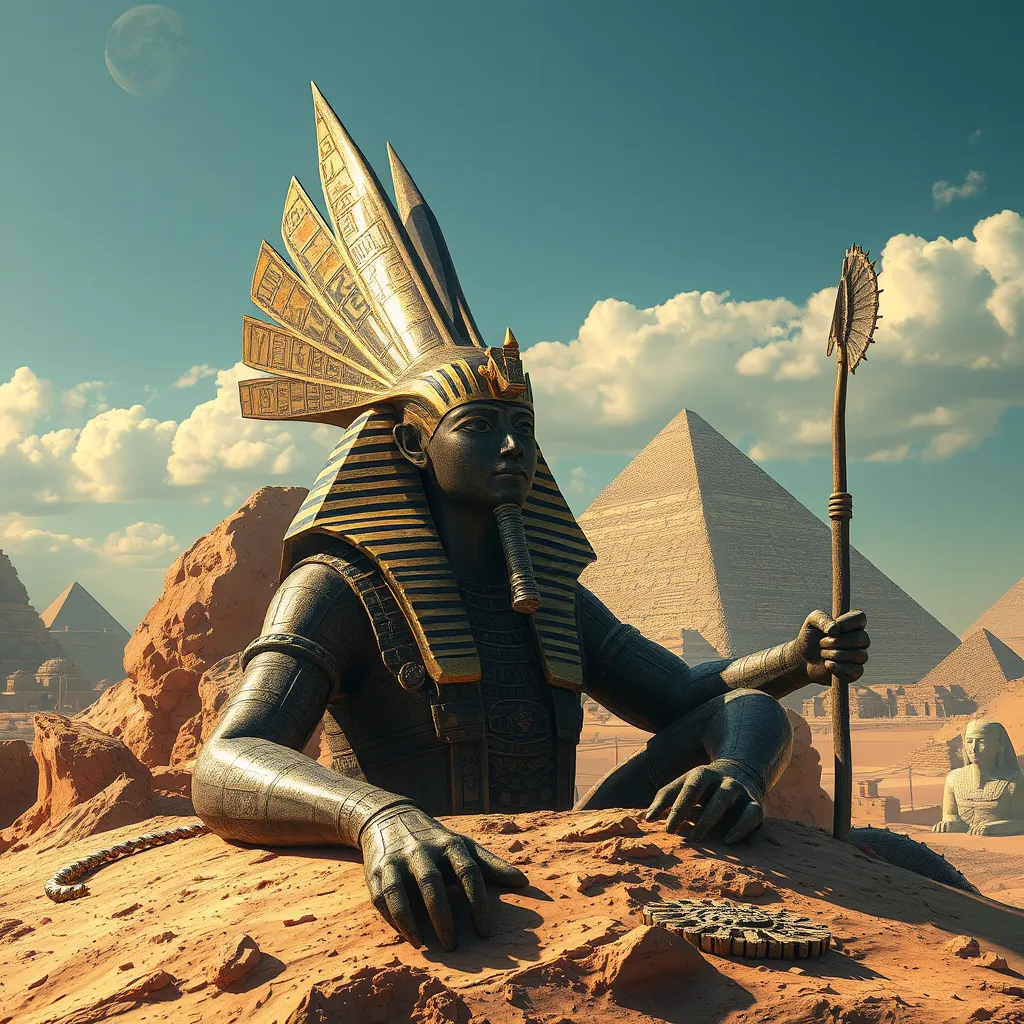Was Osiris Really Murdered by Set?
I. Introduction
Egyptian mythology is rich with complex narratives that explore themes of life, death, and the afterlife. Among these stories, the tale of Osiris and Set stands out as one of the most poignant, encapsulating the struggle between order and chaos. Osiris, the god of life and resurrection, and Set, the god of chaos and destruction, are key figures in this mythological narrative. This article aims to delve into the intricacies of Osiris’s murder, examining the events that led to this pivotal moment in Egyptian mythology, as well as the implications of this story for ancient Egyptian culture.
II. The Myth of Osiris and Set
The myth of Osiris is a foundational story in ancient Egyptian belief systems. Osiris was revered as the god of the afterlife, agriculture, and fertility, while Set represented the forces of chaos, storms, and the desert. Their relationship is emblematic of the dichotomy present in many mythologies: order versus disorder, life versus death.
In the myth, Osiris is depicted as a benevolent ruler who brings civilization to humanity, teaching them agriculture and the importance of laws. Set, on the other hand, is often portrayed as an envious figure who desires power and control. This rivalry culminates in a dramatic plot that ultimately leads to Osiris’s death.
The significance of this myth extends beyond mere storytelling; it reflects the values and beliefs of ancient Egyptians, illustrating the constant struggle between good and evil, and the importance of resurrection and continuity in life.
III. The Circumstances of Osiris’s Death
Set’s plot against Osiris is a pivotal moment in the myth. Driven by jealousy and a desire for power, Set devises a cunning scheme to eliminate his brother. He tricks Osiris into entering a beautifully crafted sarcophagus, claiming it would be a gift. Once Osiris is inside, Set seals the sarcophagus and throws it into the Nile, leading to Osiris’s drowning.
- Set’s deception involves:
- Creating a false sense of security for Osiris.
- Luring Osiris with promises of a gift.
- Using the sarcophagus as a means of entrapment.
This act of betrayal represents a profound violation of familial bonds, emphasizing Set’s ruthless ambition. The actual events leading to Osiris’s demise highlight the themes of deception and treachery that permeate the myth.
IV. The Motives Behind Set’s Actions
Set’s motivations for murdering Osiris are deeply rooted in jealousy and rivalry. As the god of chaos, Set represents the darker aspects of human nature, including envy and the lust for power. His animosity towards Osiris stems from a perceived threat; Osiris’s popularity and benevolence overshadow Set’s own attributes.
The socio-political context of their conflict is crucial to understanding Set’s actions. In ancient Egyptian society, the struggle for power among gods mirrored the political dynamics of the time, where rival factions vied for control. Set’s character can be interpreted as a representation of the chaos that disrupts order, making his actions both a personal vendetta and a larger commentary on the balance of power.
V. The Aftermath of Osiris’s Murder
The aftermath of Osiris’s murder is as significant as the act itself. His wife, Isis, plays a crucial role in the narrative, demonstrating unwavering devotion and determination. After searching tirelessly for her husband’s body, Isis eventually finds Osiris and resurrects him through powerful magic, highlighting themes of love, loyalty, and the enduring bond between them.
The impact of Osiris’s resurrection on Egyptian mythology is profound. It transformed him into the god of the afterlife, symbolizing hope and the possibility of rebirth. This narrative not only reinforced the importance of the afterlife in Egyptian religion but also established Osiris as a central figure in the pantheon.
VI. Alternative Interpretations of the Myth
Scholarly debates surrounding the nature of Osiris’s death reveal a rich tapestry of interpretations. Some scholars argue that Osiris’s demise should be viewed symbolically rather than literally, representing the cyclical nature of life and death.
- Key interpretations include:
- Symbolic death and rebirth as part of agricultural cycles.
- Literal interpretations emphasizing the betrayal narrative.
- Cultural variations that reflect local beliefs about life and death.
These varied interpretations illustrate the complexity of the myth and its adaptability to different cultural contexts and beliefs, reflecting the diverse perspectives of ancient peoples.
VII. Legacy of the Osiris-Set Narrative
The legacy of the Osiris-Set narrative has far-reaching implications, influencing later mythologies and literary traditions. The themes of betrayal, resurrection, and the eternal struggle between order and chaos resonate through various cultures and narratives.
In modern interpretations, the story of Osiris and Set has made its way into popular culture, inspiring countless adaptations in literature, film, and art. The enduring nature of these themes continues to captivate audiences, serving as a reminder of the universal human experiences of loss, conflict, and renewal.
VIII. Conclusion
In summary, the narrative of Osiris’s murder by Set is a complex tale that intertwines themes of jealousy, betrayal, and resurrection. The exploration of this myth reveals the intricate relationship between the characters and the cultural significance of their story in ancient Egyptian beliefs. As we reflect on the complexities of mythological narratives, it becomes clear that the story of Osiris and Set remains a powerful lens through which we can understand the values and beliefs of ancient civilizations.
Ultimately, the tale of Osiris and Set not only serves as a reflection of ancient Egyptian society but also highlights the timeless themes that continue to resonate in our understanding of life, death, and the hope for rebirth.




